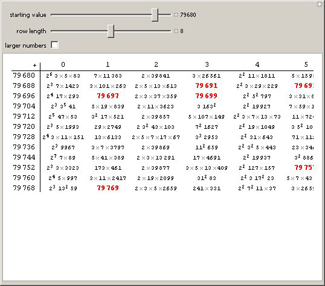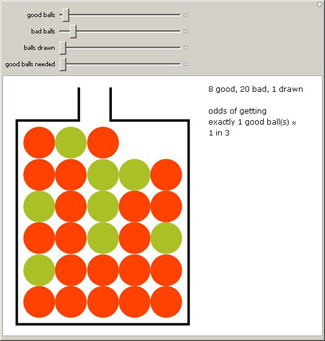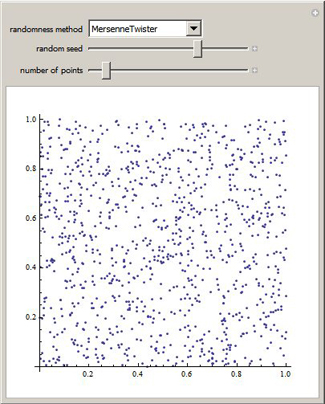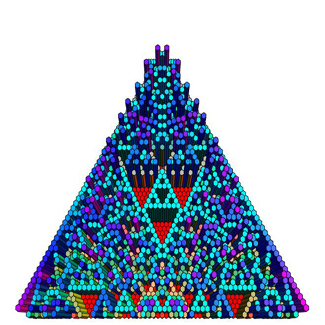UNDERWOOD
(to Hackett)
You look kinda familiar.
HACKETT
I was at the ceremony when you were
awarded the 15 million dollars two
years ago. You hit Super Lotto with 2,
7, 19, 23, 31, 41 and mega ball: 13.
UNDERWOOD
How do you remember that?
HACKETT
They were all prime numbers. That
hasn't happened since the Mega
Millions Miracle of ë98.

A table of prime factors, with the primes indicated in red.
CHARLIE
I was right.
ALAN
Still, some of the money helps fund
schools and support teachers.
CHARLIE
That's the irony. The money funds
schools that teach, among other
subjects, mathematics. But if more
people understood probabilities,
fewer would play the lottery.
ALAN
People give more if they think
they'll get something in return.
CHARLIE
They're buying into a game that's
designed to make players believe
the odds are better than they are.
The lottery makes you pick six
numbers between 1 and 49. But it's
the same as asking people to pick a
number between 1 and 14 million.

Suppose you have a lottery ticket. The ticket shows your six good balls, and there are 50 bad balls. Six balls are picked from the 56 balls
in an urn. What are your chances of getting exactly 4, 5, or 6 matches? Many lotteries and gambling games are based on this concept of picking
from mixed good and bad balls.
CHARLIE
This is a three dimensional
representation of the lottery's
numerical relationship between
ticket serial numbers and prize
amounts. You're looking at 50 data
points. Each one represents a
serial number of a stolen scratchoff.
As you can see, they appear to
be random.
HACKETT
With a limited amount of
information, there's no way to
determine the algorithm used to
encode the tickets.
CHARLIE
But the robbers accumulated 10,000
serial numbers.
Hackett hits a button, the model's filled with 10,000 points.
They all line up to form a very distinct, repetitive pattern.
DON
Not so random after all.
CHARLIE
Once you know the pattern, you can
crack the code.
HACKETT
The robbers have enough data to
identify the serial number of the
jackpot ticket.

The pseudorandom methods (such as the Mersenne Twister) seem random, while the quasirandom methods (such as Sobol) seem to have a pattern, with
less clustering. As an example of where quasirandom methods might be better, one method for estimating the area of a shape is to bound it, then
to pick random points from that area. Using pseudorandom numbers gives the Monte Carlo method. With quasirandom numbers, the method is called
quasi-Monte Carlo. Due to the relative evenness of the quasirandom methods, sometimes they give better estimates.





